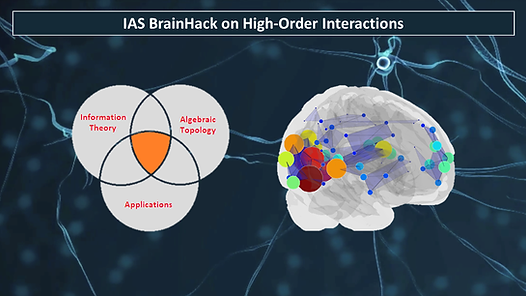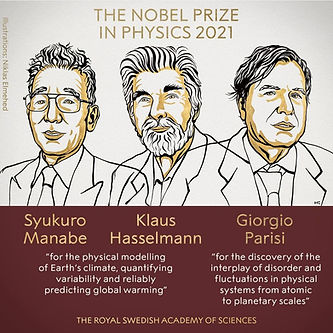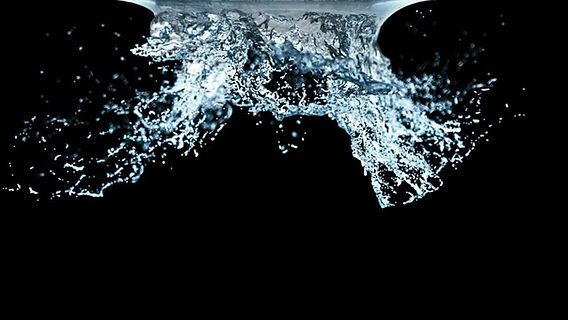
Events - Archives
2018 - 2023
Below you will find more information about past events.
You can also keep up to date with DIEP events by subscribing to the newsletter here.
>> December 20th 2018: DIEP colloquium with Andrea Cavalleri
Time: 16:00-17:00 | Location: UvA, Science Park, room C0.110
Hosts: Mark S. Golden and Erik van Heumen
Andrea Cavalleri is professor at the Max Planck Institute for the Structure and Dynamics of Matter at Hamburg and at the Department of Physics at the University of Oxford. As part of his stay he will be giving a talk on his recent work on photoinduced superconductivity (see title and abstract below). Drinks are provided after the colloquium at the FNWI foyer.
Abstract: Photoinduced superconductivity and other stories
In this lecture, I will discuss how coherent electromagnetic radiation at infrared and TeraHertz frequencies can be used to drive coherently and to large amplitudes interesting collective excitations in solids. The nonlinear cooperative response of low-frequency excitations is largely unexplored and can yield new types functional control. I will for example discuss experiments in which superconducting fluctuations can be amplified by light at temperatures higher than the thermodynamic transition temperature. I will also discuss how X-ray Free Electron Lasers are integral to this work, and how they can be used to sample the dynamical evolution of crystal lattices and of other microscopic parameters in time.

>> October 1st 2018: Talk by Amos Yarom
Time: 15:00-16:00 | Location: UvA, Science Park, room C4.174
Amos Yarom is a professor at Technion- Israel Institute of Technology and has made significant contributions to hydrodynamics and black holes. He be visiting DIEP from the 30th September to the 1st of October 2018 (more info here). As part of his stay he will be giving a talk on his recent work on hydrodynamics (see title and abstract below).
Abstract: New constraints on transport from Schwinger Keldysh theory
After a review of a novel low energy effective action for the Schwinger-Keldysh generating function, I will describe how it captures information on the entropy current, Onsager relations, and new constraints on transport.

>> 20th September 2018: IoP colloquium by Sebastian Huber
Time: 16:00-17:00 | Location: University of Amsterdam, Science Park, CWI’s Turingzaal
Sebastian Huber (ETH Zurich) will be visiting DIEP from the 20th-21st of September 2018 (details here). He works on topomechanics, driven systems and condensed matter theory. On September 21st, Sebastian will be giving a broad lecture (see title and abstract below) on topological mechanics.
Abstract: Topological mechanics
The elastic properties of materials are determined by a few material constants such as the Young’s modulus. Using super-structures one can effectively change these “constants”. In this way we obtain functionalities such as wave-guiding, acoustic lensing or programmable failure. I will show how topological band theory, known from the description of electrons in solids, provides us with a powerful design-principle for such mechanical metamaterials. Moreover, mechanical metamaterials offer a powerful platform for the study of fundamentally new phenomena that are hard to observe in other arenas. Here, I will highlight the first measurement of a quadrupole topological insulator in a silicon-based metamaterial and the implementation of an axial gauge field in an acoustic Weyl system.

>> June 22nd 2018: DIEP seminar by Jeremy Butterfield
Time: 16:00-17:00 | Location: UvA, Science Park, room G4.15
Jeremy Butterfield is a distinguished philosopher of physics and a senior research fellow at Trinity College, Cambridge. He works on philosophical aspects of emergence and will be visiting DIEP from the 20th-23rd of June 2018 (more info here). As part of his stay he will be giving a talk on dualities and its relation to emergence (see title and abstract below).
Abstract: On Dualities and Equivalences Between Physical Theories
The main aim of this paper is to make a remark about the relation between (i) dualities between theories, as `duality' is understood in physics and (ii) equivalence of theories, as `equivalence' is understood in logic and philosophy. The remark is that in physics, two theories can be dual, and accordingly get called `the same theory', though we interpret them as disagreeing---so that they are certainly not equivalent, as `equivalent' is normally understood. So the remark is simple: but, I shall argue, worth stressing---since often neglected. My argument for this is based on the account of duality developed with De Haro: which is illustrated here with several examples, from both elementary physics and string theory. Thus I argue that in some examples, including in string theory, two dual theories disagree in their claims about the world. I also spell out how this remark implies a limitation of proposals (both traditional and recent) to understand theoretical equivalence as either logical equivalence or a weakening of it.

>> May 31st and June 1st 2018: Talks by Jemal Guven
May 31st| Time: 13:00 | Location: Lorentz Center, Leiden,
room 276 (Casimirzaal) of the Oort building
June 1st | Time: 10:00 | Location: UvA, Science Park, room C4.174
Jemal Guven is a professor in physics at UNAM, Mexico, who works on mathematics applied to soft matter systems. He has done substantial work on membrane deformations and Helfrich functionals (see more details here) and will be visiting DIEP from 28th of May to the 4th of June. As part of this stay he will be giving two talks, one at the Lorentz Center in Leiden and one at UvA (see titles and abstracts below).
Abstract (May 31st): Lost in a fog: Conformal arclength, its tension-free states and spatial analogs of the logarithmic spiral
The conformal arclength is the simplest conformal invariant associated with a curve.
As such, one would expect it to play a role in the identification of self-similar patterns occurring in nature. Not surprisingly, logarithmic spirals are critical points of this "energy"; on a plane they also turn out to be
the only curves in which the corresponding tension vanishes. It is curious that, despite all the attention that spatial spirals have received since D'Arcy Thompson aired the subject in his monumental ''On Growth and Form", there has never been a systematic attempt to characterize the analogs of a log spiral when one steps up a dimension. I will propose one borrowing freely the language of Euler elasticity, tweaked to accommodate conformal symmetry. The qualitative behavior of tension-free curves is controlled by just two parameters, the scaling current S (a measure of curvature) and the magnitude of the torque M. Fixing S places a lower bound on M. The naive analog of Bernoulli's spiral, a logarithmic expanding helix spiraling ever upwards about the torque axis, involves fine tuning M and S; it is also the least interesting. If M is increased, the spiral will begin to deviate from the helical form as its torsion oscillates. At a critical value of M the torsion falls asymptotically to zero. Beyond this critical value, the torsion will oscillate about zero; the spiral now folds on successive oscillations as it expands. I will argue that these supercritical trajectories approximate rather well the nutating tip of a growing tendril in a climbing plant first described by Darwin. With hindsight, this is perhaps not so surprising.

Abstract (1st of June): How paper folds: stress focusing in ice-cream cones and ruffled collars
The elementary defects on an unstretchable thin sheet of paper free to bend are described by cones, characterized metrically by the angle (deficit or surplus) at the apex.
In symmetrical cases, it is relatively simple to determine the correct equilibrium geometry without any knowledge of the distribution of stress within it. Determining the latter, however, has proven to be a fraught issue, even for an apparently trivial circular ice-cream cone. I will propose a solution that completes the physical description. Intuitively, unstretchability is captured by a constraint on the metric within the sheet. Indeed imposing this local constraint on the bending energy in the calculus of variations provides the correct shape equations satisfied within the sheet. This is not sufficient however: for if it were it would imply unbalanced torques (as well as forces) along all free edges unless manifestly unphysical constraints are met there. What is missing are additional constraints ensuring that the deformed boundary is also consistent with isometry. Contrary to conventional wisdom, there is no need to introduce boundary layers. I will show how this framework can be applied to determine both the geometry as well as how stress gets focused within cones. A circular ice-cream cone with a deficit angle may be trivial geometrically but the stress within it is not. I will comment on oblique boundaries. A cone exhibiting a surplus displays an infinite number of states but only one that is stable. When the apex is cut out, I will argue that the resulting annulus (a Dutch collar) relaxes into a non-conical flat geometry, its rulings no longer converging to a single point; its stress defocused.
>> May 25th 2018: community building day
Time: 09:30 – 18:00 | Location: Ottone – Utrecht, Kromme Nieuwegracht 62 – Remonstrantse Kerk
Integrated in the community building day of Route 2, on May 25th, DIEP invites all those who try to connect different levels of reality: those who coarse-grain or fine-grain their theories, those who build microscopic theories in order to understand emergent phenomena at a larger scale, those who model physical systems at different scales, those who try to understand how novel behaviour such as self-assembly takes place, those who try to understand how classical physics emerges from the quantum world and those who think about the philosophical aspects of emergence.





During this exciting session, you will have the opportunity to hear about DIEP's structure, opportunities and future plans as well as attend representative talks of its focus areas by Vijay Balasubramanian (U. Penn: brains and black holes), Alix McCollam (RU: emergence in condensed matter), Frank Redig (TU Delft: emergent macro-dynamics), Joop Schaye (U. Leiden: simulating the universe) and Daan Frenkel (U. Cambridge: merging and emerging behaviour).
>> May 24th 2018: IoP colloquium by Vijay Balasubramanian
Time: 16:00-17:00 | Location: University of Amsterdam, Science Park, room G2.10
Vijay Balasubramanian (U. Penn) will be visiting DIEP from the 24-26th of May (details here). Vijay has two scientific lives: he works on string theory by day and on biophysics by night (or the other way around, no one actually knows!). In any case, his research in string theory, black holes and quantum information theory has led him to establish his own group in biophysics which applies information theory to neural networks and the brain. On May 24th, Vijay will be giving a broad lecture (see title and abstract below) for scientists on emergent behaviour in mathematics and neural networks.
Abstract: The Maps Inside your Head?
How do our brains make sense of a complex and unpredictable world? In this talk, I will discuss a physicist's approach to the neural topography of information processing in the brain. First I will review the brain's architecture, and how neural circuits map out the sensory and cognitive worlds. Then I will describe how highly complex sensory and cognitive tasks are carried out by the cooperative action of many specialized neurons and circuits, each of which has a simple function. I will illustrate my remarks with one sensory example and one cognitive example. For the sensory example, I will consider the sense of smell ("olfaction"), whereby humans and other animals distinguish vast arrays of odor mixtures using very limited neural resources. For the cognitive example, I will consider the "sense of place", that is, how animals mentally represent their physical location. Both examples demonstrate that brains have evolved neural circuits that exploit sophisticated principles of mathematics - principles that scientists have only recently discovered.













